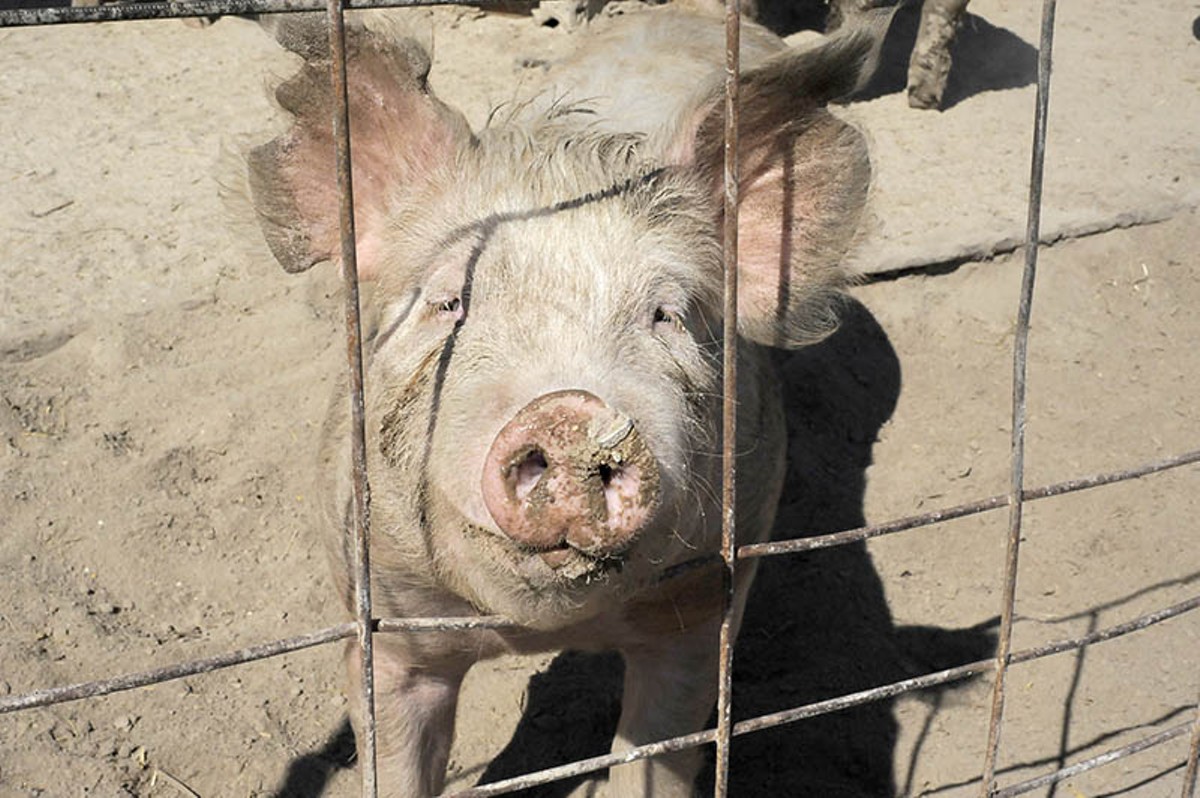The strength of a seven-week-old piglet is real and, in all likelihood, a bit more intense than you'd guess. When you grab one, especially when it's around some panicked contemporaries, the li'l animal's going to buck and wriggle, it's going to squeal in a high pitch that you've never quite heard before and it's going to attempt to shake your grip through sheer force of will. A piglet, even one born as recently as the very last days of 2015, has a power that you don't fully understand until you have couple dozen pounds of live Missouri pork dangling in your arms.
A few weekends back, I was with Maddie Earnest, the co-owner of Local Harvest Grocery, in the middle of a pen full of piglets, each of them getting two vaccinations, exactingly given by Katie Geisert. The wife of the eponymous owner of Todd Geisert Farms, Katie Geisert sat on a bale of straw, a needle in each hand, tasked with a difficult job. Because of earlier cold weather, the shots were coming as a pair, rather than being spaced out over a couple of weeks. It was important to get the second vaccination done on this beautiful mid-winter morning, as the piglets were passing their sixth week of age; both shots were key inoculations during the first month-and-a-half of their lives, and two-thirds of what they'd need in total during their stay on this farm.
Expertly, Geisert plunged each needle into the space just under the piglet's front legs, a mostly-hairless, quarter-sized patch of taut skin. To do this properly, she needed a still pig, one that wasn't going to flinch.
"Hold it between your knees," she said to me about three piglets into the experience, as one violently wrenched in my hands. "They'll be a lot more stable that way."
Sure enough, the piglet, writhing a moment before, let go a bit. Cinched between my knees, the animal relaxed a little; in essence, it was giving in to the inevitable, short-lived pain that was coming its way.
And then the needle hit the skin. With the animal tightly pressed to (and controlled by) my own body, I could feel the transfer and shift of that energy immediately as the piglet began its super-squirms. Then the screaming began. Each piglet had roughly the same response in the same sequence: the intense capture, as they were grabbed by the back, or front haunches; the pull up, to secure them by the forelegs; the short carry to the vaccination station; the shots, followed by their near-human cries; and then the final step, a drop of the piglet over a low fence, which gave it access to a vast, acres-large field and its momma.
"You can go ahead and put 'em over," an athletically-built college student/farmhand named Scooter told me. "As long as you don't drop them on their head, they'll be fine. They're really tough."
And so Maddie and I spent part of a morning working in a half-dozen member crew, catching, carrying and flipping piglets, patiently moving 70-something piglets from one field through the process, and then double that many from a second field. At one point before we started the second group, someone mentioned that the herd of sows and piglets would be moving "like a tornado" as they approached the holding pen, shushed along by the rest of the crew. And, sure enough, that's how it looked, the tiniest pigs flitting in and out of the way, running in a fast, frenzied, circular motion. Out of everything I saw that day, that's the image that sticks.
It was amusing to see that, really quite funny. Until, of course, that moment when you realize every animal in that field being treated so patiently is there for the purpose of being eaten.






